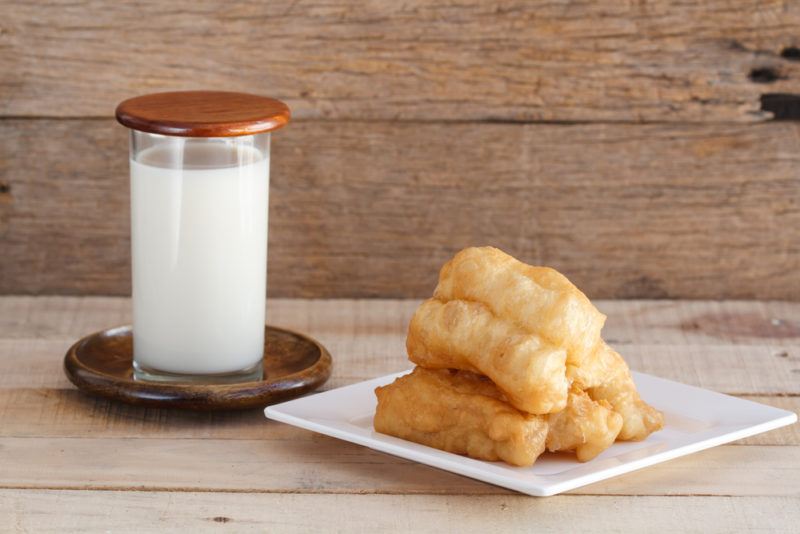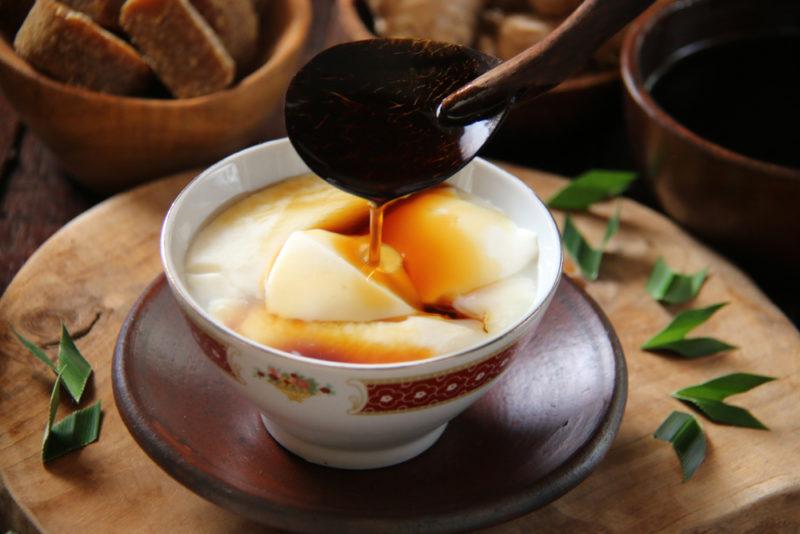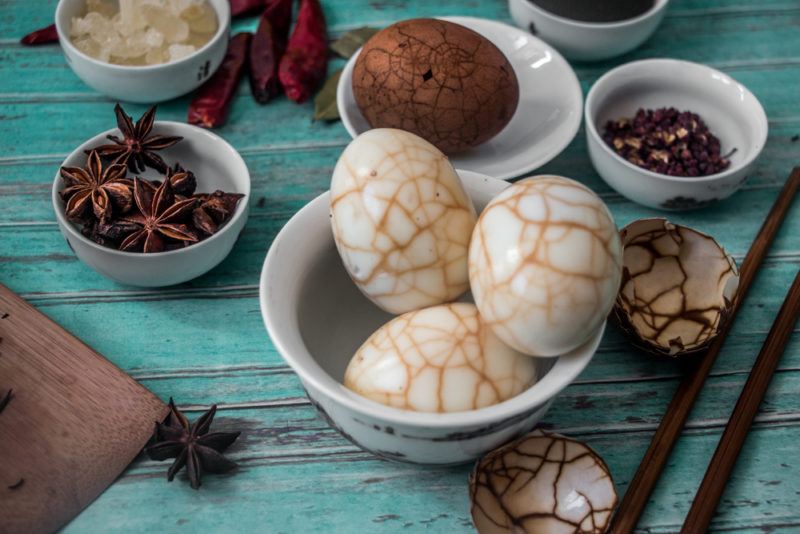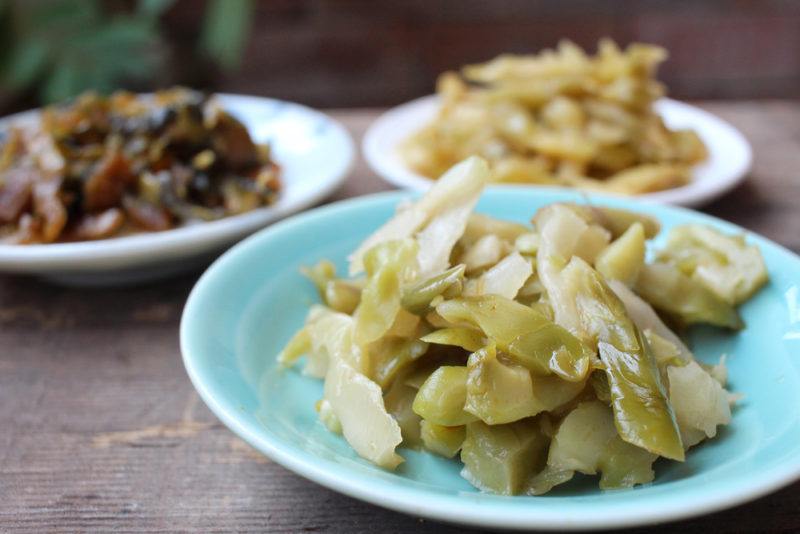
Breakfast isn’t just the most important meal of the day, it’s also the most interesting one. The amount of variation from one country to the next is truly incredible. Some cultures make a big deal out of breakfast, focusing on large savory meals that can keep them going for most of the day. Others almost skip the meal entirely or just focus on small and dishes. Traditional Chinese breakfast foods follow the first approach, to some degree, and may seem quite strange to Western audiences.
While Chinese breakfast s do vary dramatically depending on the part of the country, there are some familiar features. Rice noodles, tofu pudding, steamed buns, deep-fried dough sticks, and soy milk are popular examples. We’ll take a closer look at these in the post, along with the flavors that you can expect.
But, as you can probably guess, there’s a tendency towards savory breakfasts. Some will keep you full for quite some time, while others simply fill the gap until the next meal.
If you’re looking for a different style of breakfast, you might consider French, English, or Italian breakfasts instead.
Traditional Chinese Breakfast Foods
- Deep Fried Dough Sticks and Soybean Milk
- Steamed Buns
- Tofu Pudding
- Rice Dumplings
- Wontons with Noodles
- Wheat Noodles
- Rice Noodles
- Rice Porridge
- Pancakes
- Flour Tea
- Dim Sum
- Tea Eggs
- Pickles
- Menzi
Deep Fried Dough Sticks and Soybean Milk

While you can have deep fried dough sticks or soybean milk individually, the two components are often sold and served together – particularly in northern China.
The dough sticks are exactly what you would expect – sticks of dough that have been deep fried. This means that they usually have a fantastic texture, but the flavor profile isn’t all that interesting. Dipping the sticks in soy milk is an easy way to make them taste much better.
The dough sticks sometimes go by the name crullers. You can make these at home too, but they’re most popular as a snack you can buy from street vendors.
The soybean milk is made in a blender. You’ll often find it freshly ground and boiled at stalls throughout China, making it easy to buy some for breakfast on the go. This soy beverage can be salty or sweet, but will taste delicious either way.
Some versions of this breakfast involve soaking the fried dough sticks in soy milk instead. When you do this, the dough sticks take on all the flavors of the soy milk, and you get a breakfast that is very easy to eat.
Steamed Buns

Steamed buns aren’t exclusively a breakfast food in China. They’re enjoyed at any point during the day. It’s easy to see why too, as there are countless different styles and flavors to try. The buns are also easy to pick up and eat, which is just what you need first thing in the day.
Sweet steamed buns can include ingredients like custard, sugar, sesame seeds, or bean paste. Salty steamed buns, on the other hand, might rely on ground pork, eggs, vegetables, or perhaps eggplant. Some versions might be decorated too, which makes them even more appealing.
The complexity can vary too. Some steamed buns might just use one or two ingredients as a filling, while others may use many more, giving them an intricate flavor profile.
If the buns are a regular size, then two of them should be enough for breakfast. Alternatively, some places sell baskets of small buns. You might get around eight buns in a basket. The small buns can be even easier to eat than their larger counterparts.
There are even some steamed buns with no filling at all. These aren’t as satisfying as the filled buns, but they’re ideal as a light snack.
You don’t need to eat the buns on their own either. You might have some meat or soup at the same time to give you a more satisfying meal. The buns can even be served alongside General Tso’s chicken (although, probably not for breakfast!).
Tofu Pudding

Tofu pudding might sound strange, but it’s a popular snack or breakfast choice. This relies on very soft tofu and can easily be eaten out of a cup or a small bowl.
The pudding can be sweet. Sweet versions often rely on brown sugar syrup for the sweetness and might include some ginger for a delicious contrast. This style is common in the south of China.
People in northern China focus on savory tofu pudding instead. Here, the soy sauce or salt feature in the liquid around the tofu, rather than sugar. Meat might be included too, which makes the dish more satisfying.
Rice Dumplings

Rice features in many Chinese meals, so it’s not surprising to see it as a breakfast ingredient too. Rice dumplings are one of the simplest options. They’re made of steamed glutinous rice. The balls are often wrapped in bamboo leaves, but this isn’t essential.
Many different fillings can be used with these balls. Possible ingredients include red bean paste, fatty pork, chestnuts, and egg yolk. As with regular dumplings, you end up with a portable breakfast that can be salty or sweet.
One difference is that rice dumplings are much faster to put together. Street vendors will often be able to make the dumplings according to your preferences. The dumplings end up being a cheap breakfast choice too.
Wontons with Noodles

Wontons are similar to dumplings, as both types of food use some type of dough wrapper and various fillings. Wontons can be steamed like dumplings, boiled in a broth, or fried in a wok.
While any method of cooking wontons can be fine for breakfast, wonton noodles are a popular choice in some parts of China. This meal involves serving the wontons with small noodles and a flavorful broth. Other vegetables may be added as well to round the savory meal out even more.
Wheat Noodles

Wheat is more common in northern China than in the south. Here, wheat noodles often feature as a breakfast meal. You can prepare them at home or buy them in noodle stores throughout most cities.
Hot and dry noodles is one popular approach. These involve multiple steps, including boiling the noodles, drying them, and frying them. Condiments and seasonings can then be added, along with any extra ingredients. The noodles end up being chewy and delicious.
The noodles are called ‘dry’ because they’re not served with any broth.
There are plenty of other options too, including noodles that are served in a broth or with wontons.
Rice Noodles

As the name suggests, rice noodles are made from rice rather than wheat. This makes them perfect for anyone who is gluten intolerant.
Like most of the foods on this list, rice noodles aren’t just a breakfast food. They’re served throughout the day, in many different ways.
One dish involves serving the boiled noodles with thinly sliced meat, fried soybeans or peanuts, some pickled mustard, and other ingredients. The exact ingredients vary depending on where you’re buying the meal and your own taste preferences.
Rice noodles can also be served with broth or topped with any combination of ingredients. This makes them an easy and versatile breakfast choice.
Rice Porridge

While we’re on the topic of rice, here’s another very common breakfast choice. Rice porridge, or congee, is a mild type of porridge. It involves rice that has been cooked in lots of water for a long time, until it has largely broken down.
The process make the rice very soft and easy to eat. You’ll often see the breakfast served to people who are sick, elderly, or very young, but anyone can enjoy congee.
Some ingredients will be added for flavor. These might be mixed in with the porridge or served on the top. The additions are often savory, including options like fermented tofu, meat, or eggs, which all make the meal more filling as well.
There are sweet versions of congee too. These often use black rice rather than white rice and can rely on ingredients like coix seeds and red beans. You might not need any toppings with sweet rice porridge, as the dish is flavorful enough on its own.
This variety of flavors and toppings is a fantastic way to make sure that congee doesn’t get too boring.
Rice isn’t the only ingredient used to make congee either. Different grains are sometimes used in northern China, such as cornmeal or millet. Still, the dish ends up being similar regardless of the grain being used.
Pancakes

Pancakes feature in Chinese breakfasts just like they do in many other places. But, pancakes do always look a little different depending on where you are in the world.
In China, pancakes tend to be thin and are filled with spicy ingredients or savory ones (although, you may see sweet fillings too). They’re a little different than Western pancakes, as they rely on wheat flour dough rather than using a traditional batter.
You’ll sometimes find them wrapped around a slice of dough that has been deep fried. Other ingredients are used as a topping, including a fried egg and some spicy sauce. Eggs are another popular filling for the pancakes.
Of course, the exact meal is going to depend on where you are in China and who is preparing the food. Different vendors will have their own styles.
Some places even serve more Westernized types of breakfast crepes, including ones that use ham and cheese as key ingredients.
Flour Tea

Everything about this dish is unusual, including its flavor and texture. The ‘tea’ isn’t tea at all. Instead, it is a type of glutinous porridge that relies on rice flour and millet.
The porridge is then topped with brown sugar syrup or sesame paste. When made well, the porridge can end up being very thick, to the point that a chopstick might stand up in it.
The ‘tea’ is harder to find than some of the other breakfast options on this list. Still, there are some street vendors that sell it and you might get lucky (especially if you’re in Beijing).
Dim Sum

Dim sum refers to a style of eating, rather than a single type of food. Here, you have multiple dishes of small savory snacks, all served at the same time. Dumplings are a common feature here. Noodles and rice feature too, along with deep fried snacks.
Tea is often served with dim sum, including options like green tea, jasmine tea, and oolong tea.
Dim sum is a slightly unusual breakfast choice, as it is a breakfast that can be enjoyed slowly at home. In contrast, most of the other breakfasts can be quickly grabbed and eaten on the go. Many people will buy them from street vendors, making it easy to get the day started quickly.
For this reason, dim sum is more common as a weekend breakfast than as an everyday option.
Tea Eggs

Tea eggs really are what the name suggests. They’re hard boiled eggs that are soaked in a broth that includes spices, tea leaves, and soy sauce. The eggs end up having a noticeable marbling pattern from where the soy sauce seeps through the shells of the eggs.
This is one of the few cases where you’ll see eggs featured in Chinese breakfasts. But, once again, you’ll find this breakfast in some parts of China and not in others.
Pickles

You might see pickles as part of a Chinese breakfast too. These aren’t normally a breakfast food on their own. Instead, you’ll often see them served with other breakfast options, like tea eggs and noodles. For example, pickles and ramen noodles make a delicious combination.
Menzi

This breakfast may sound a bit strange to many readers. It relies on grass jelly, sweet potato powder, and some other unusual ingredients. You won’t find this breakfast everywhere in China. Instead, menzi is most often found in Shandong. Other cities have their own version of the breakfast food.
Whether you enjoy the meal or not will depend on your preferences. Still, unusual as this breakfast seems, it’s worth trying for yourself at least once.

















 36 Colorful Drinks To Make Your Night Come Alive
36 Colorful Drinks To Make Your Night Come Alive
Leave a Reply